 |
 |
||||||||||||||
| Discover Act Create Connect Jumbos In...Paradise? Fair Play Artists in Our Midsts The Little Magician Who Could Shooting for the Moon Newswire The Big Day Departments |
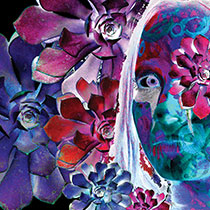 |
| Succulents by Isabella “Izzi” Montoya, A20 |
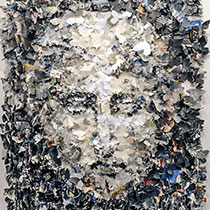 |
| Beauty by Nayoung Kim, A21 |
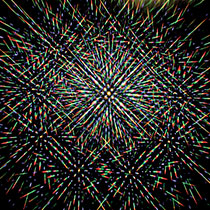 |
| Diffraction Turntable by Floor van de Velde |
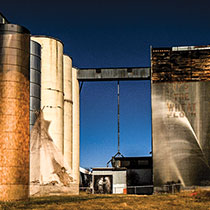 |
| Story Mill Night by Mary Ellen Strom |
 |
| No Connection by Tyler Villa, A18 |
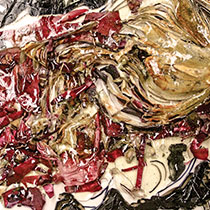 |
| Red Onion by Khadine Caines, A19 |
Artists in Our Midst
A look at the lives and works of faculty and students at the School of the Museum of Fine Arts at Tufts.The fall semester marked a new chapter in the arts at Tufts, as the students, faculty, and staff of the School of the Museum of Fine Arts began the academic year as members of the university community. The SMFA officially became part of Tufts School of Arts and Sciences on July 1 and is now called the School of the Museum of Fine Arts at Tufts University, or SMFA at Tufts.
The move follows an affiliation of more than seventy years between the two institutions. “The acquisition of the SMFA heralds a renaissance for the arts at Tufts, and will create myriad opportunities to enrich our fine arts curriculum and to infuse our community with new energy and perspectives,” said Tufts President Anthony P. Monaco.
Nancy Bauer, the dean of the SMFA at Tufts and an academic dean and philosophy professor in the School of Arts and Sciences, said the future is bright for the arts at Tufts. “My vision is to take what they’ve already done at the Museum School for a very long time and give them what they need to soar,” she said.
To celebrate the new members of the Tufts community, we talked with faculty and students at the SMFA at Tufts and asked them to share some of their art.
Isabella “Izzi” Montoya, A20
Hometown: West Palm Beach, Florida
A first-generation college student whose Colombian family speaks Spanish at home, Montoya has known that she wanted to be an artist since the day she discovered face paint at a soccer game with her brother. Before long, she was applying layers of cross-hatching and dots to friends’ faces, inspired by the tiny brushstrokes of Cezanne. Her goal, she said, was to “represent family, friends, things in our culture, specific points in life. Things that mark you.”
Montoya, who is from West Palm Beach, Florida, said her work is also informed by her love of biology. She uses leaves to make prints, and paints DNA helixes on her face using red for her mother, blue for her father, and purple for herself. At Tufts, Montoya hopes to study cells and use their structures in her art. She also wants to become a biomedical researcher.
At the School of the Museum of Fine Arts at Tufts, she said, “everything around me revolves around biology and art. This was my dream all along—to study what I want.”
Nayoung Kim, A21
Hometown: Great Neck, New York
“For me, art touches the unconscious,” said Kim, who is from Great Neck, New York. “I am able to see what I am thinking more clearly. When I explain my art, I learn about myself.” Much of Kim’s work deals with nature, and animals are a recurring theme. “In one project, I drew five lizards and put them on a clock-like structure I had made out of wood,” she said. “The lizards were chasing crickets, but also chasing after time.”
For another project, Kim said, “I made this really big sunny-side up egg out of paint and glue, and I placed eleven cardboard chickens on top of the egg. It’s humorous, but if you look at it another way, it’s cruel; the chickens are eating the egg—they are picking at it. It’s interesting to see how people interpret it.”
The SMFA at Tufts means not having to choose between academics and art, Kim said. “Having multiple perspectives, I think, will create artwork that is more personal and more meaningful,” she said.
Floor van de Velde
Full-time visiting artist, Department of Performance and 3D
Though she grew up training for the career of a classical musician, van de Velde eventually changed direction, starting a design studio in New York and studying visual arts at MassArt and MIT.
Combining sculpture, sound, and light in a variety of formats, van de Velde, a graduate of the MIT master’s program in science in art, culture, and technology, draws inspiration from sound, language, and science. For instance, her Luminous Scores: Reflections on Light in Art and Science draws inspiration from the research of University of Wisconsin physicist Robert Wood, a pioneer in ultraviolet and infrared photography.
“A big part of my philosophy is not what is art, or how do I teach art, but what can art teach us?” van de Velde said. Joining with Tufts, she said, “will open up new avenues for collaboration between seemingly disparate research areas, which is a unique position for an art school to be in.”
Mary Ellen Strom
Professor of the practice, Media Arts
Teaching video installation and contemporary art practice at the graduate level, Strom helps her students understand that art is connected with the people, places, and disciplines around it. For a 2003 video installation, for instance, she worked with members of the Crow and Northern Cheyenne nations to produce a haunting work. As a train barrels through the Bozeman Pass in Montana, a ghostly herd of buffalo appears. The white silhouettes run toward the train, then disappear. The train also passes a dozen figures frozen on a hillside—railroad workers stopping a landslide, just as they do in an 1872 photograph.
“One thing that young artists in particular learn to do is to be lightning rods for ideas of great consequence to the planet,” Strom said. “In art classrooms, we’re challenged to think of inhabiting the world in a different way, to develop an artist’s ethos and think about the ways that art contributes to the planet.”
Tyler Villa, A18
Hometown: Needham, Massachusetts
In high school, Villa designed costumes for student productions. “I had my heart set on being a fashion designer and running away to New York,” he said. But then an art teacher pointed out that his dresses—which included offbeat materials—were actually sculptures. “Up until that point, I didn’t really consider myself an artist,” he said.
Villa, who is from Needham, Massachusetts, now works in sculpture, painting, drawing, collage, ceramics, photography, videography, and poetry. “I usually just say that I am a philosopher, because all of my pieces stem from a concept,” he said. “I like to view the drawings and paintings as sentences and paragraphs rather than just abstract shapes,” Villa said. “They could be read like a story, with a beginning and an end.”
Here’s how he describes his sculpture No Connection: “All of those little cups are upside down, so all their contents are spilling out, and there are two entities standing alone along either side. Whatever your baggage is, you bring it to the table whenever you are talking to someone else, and you end up with a cluster of baggage between you.”
Khadine Caines, A19
Hometown: Miami, Florida
“Ever since I found out about the SMFA, I wanted to go there,” said Caines. That was back in the seventh grade, when an SMFA admissions officer visited a class she was taking at the Learning Tree of Arts, an organization in Caines’ hometown of Miami that helps student artists with portfolio preparation.
A merit award winner in the 2015 National YoungArts Foundation visual arts competition, Caines grew up in a multi-generational Dominican household where food was an important part of culture. That inspired her to begin painting with inks she made out of fruits and vegetables—the remains of which she then incorporated into sculptures. To this day, her work is informed by those early experiments. For instance, her piece Layered is constructed of thin slices of vegetables arranged between Plexiglas sheets.
Caines’ portfolio has more recently branched out into the world of plants, which she hopes to explore more fully by taking botany and biology courses in the School of Arts and Sciences.